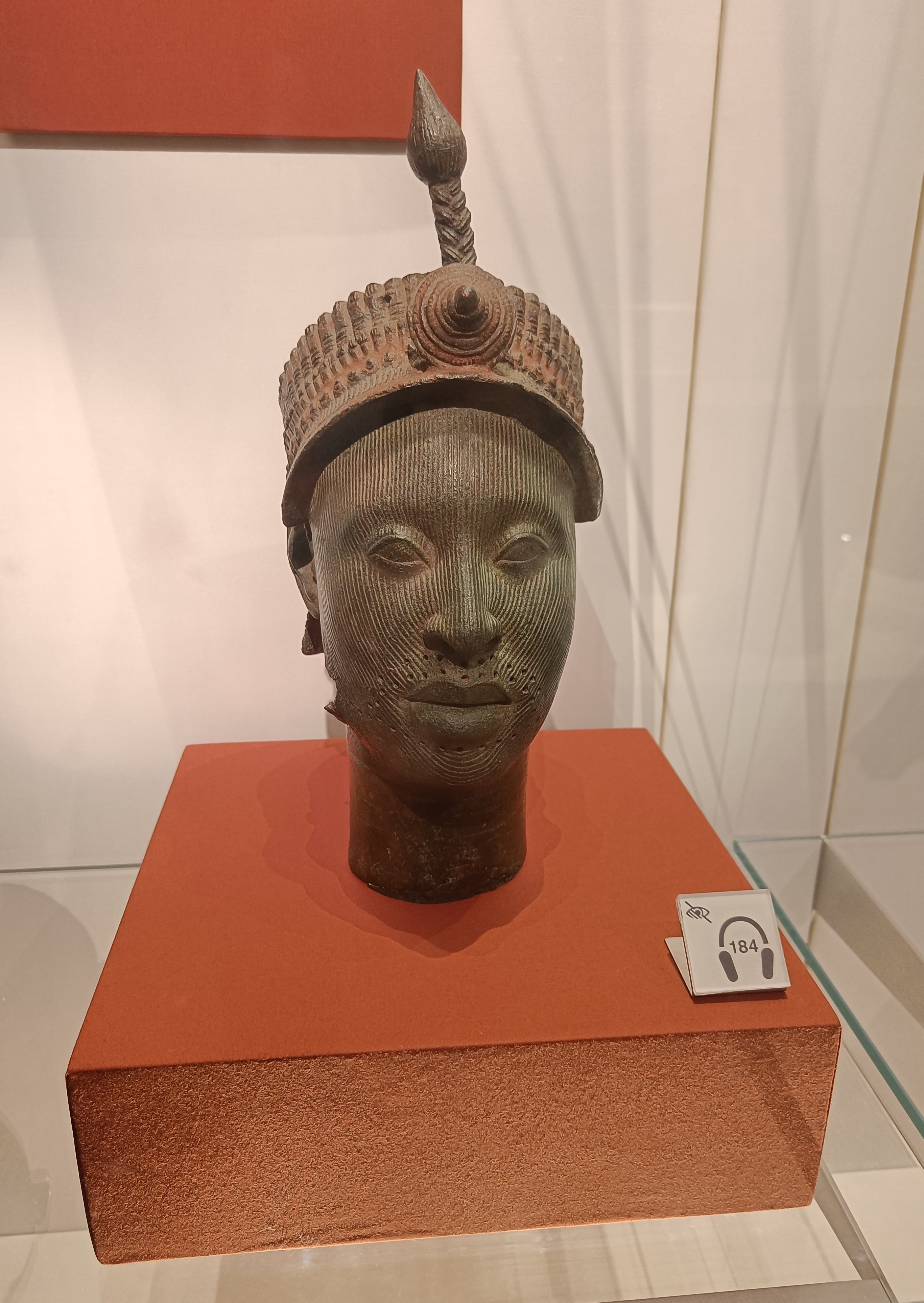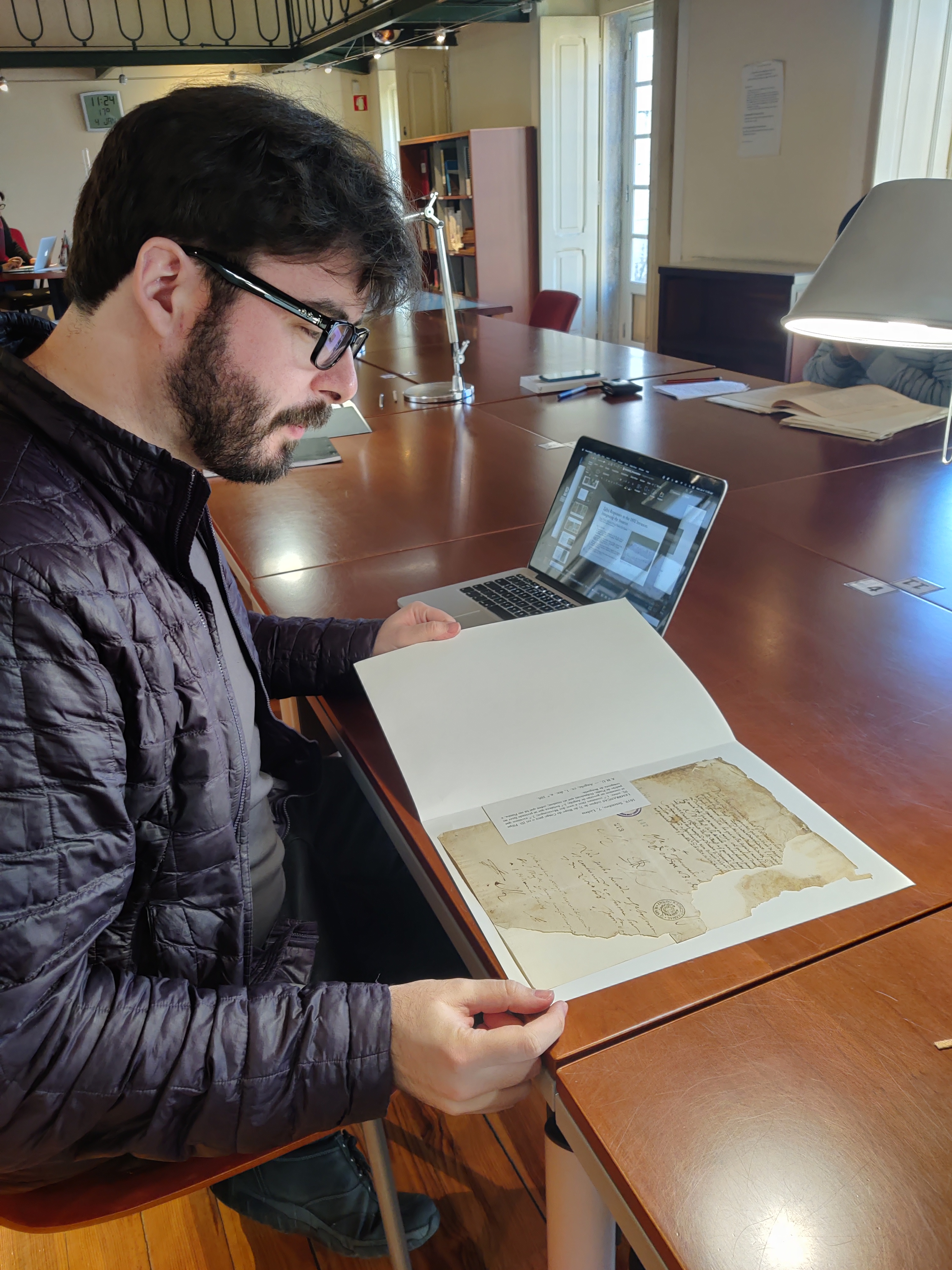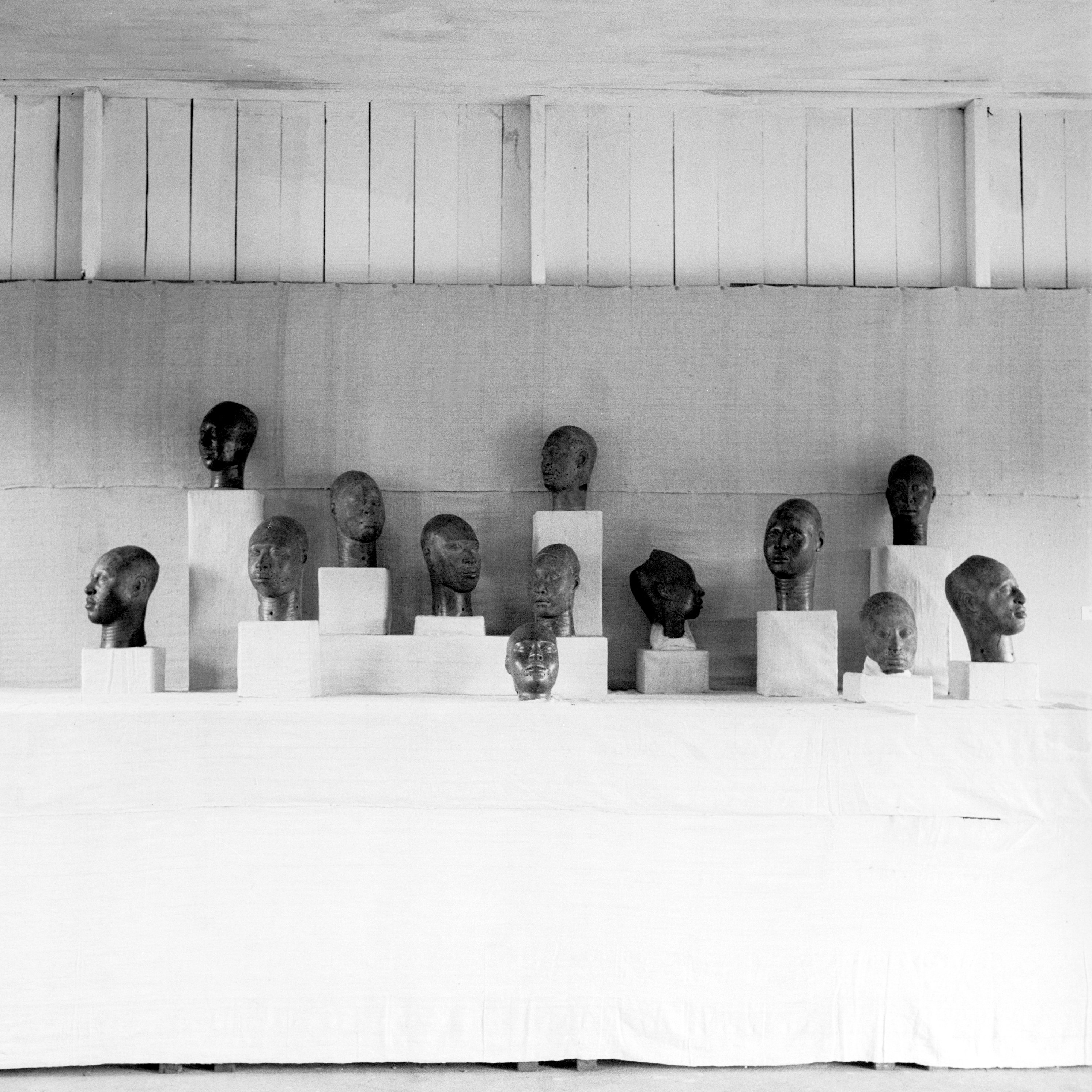PhD. Candidate Tomos L. Evans Publishes Three New Articles on Famous Ifè Bronzes
PhD Candidate Tomos L. Evans has been working in depth with Nigerian art and is pleased to announce the publication of three articles related to this research. Here is a breakdown of his research and what to look forward to in these articles.
Q: I know that much of your research throughout your time here at William & Mary has focused on Nigeria: what are these articles about more specifically?
Tomos: The three articles that I am publishing relate to different dimensions of the history of the world-famous 14th/15th century copper alloy heads of Ilé-Ifẹ̀, Nigeria, which are also referred to as the Ifẹ̀ Bronzes. Ilé-Ifẹ̀ is a city of cultural, sacred, and historical significance to the Yorùbá peoples, and it was here that in 1938 a cache of seventeen or eighteen spectacular naturalistic copper alloy heads were found. These were uncovered during the construction of a house at a site near the royal palace traditionally associated with the past Ọ̀ọ̀ni (sacred king) Wúnmọníjẹ̀. This discovery was a big deal at the time, both in Africa and the West, as the fine quality, craftsmanship, and naturalism of the heads ran counter to some of the racist narratives pertaining to African art at the time, which tended to emphasize its purported alterity, relegating it to the category of “primitive” art. Shortly after the discovery, at least three of these heads were exported from Nigeria, including two by the famous American anthropologist William Bascom who was pressured to return them to Nigeria in 1950 in an unusual early example of cultural repatriation in British colonial West Africa.
Q: Interesting! So I imagine there’s even more to this story, since they were repatriated, they must be of some even greater cultural importance. What is your main interest in the heads as an anthropologist in 2023?
Tomos: The heads today are very famous, with most of them now held by museums in Nigeria. They regularly feature in archaeological, art historical, and popular publications, are an important symbol of Yorùbá, Pan-African, and diasporic identity, and are a centerpiece of the British Museum’s Sainsbury Africa Galleries where a spectacular crowned example of one is on display. This particular head always fascinated me during my visits to the museum, and upon learning more about it and the other heads after reviewing the published literature, I was shocked to find that relatively little was actually known about numerous aspects of the heads’ history. Many questions remained largely unanswered: how exactly did the British Museum acquire such a head in 1939, and might there be others like it that were exported abroad but lost? What was the depositional/”archaeological” context of the heads (e.g., locations of discovery, associated artefacts etc.) and how might this help shed light on our understanding of their past significance? How did local people in Ifẹ̀ interpret and explain the heads at the time of their discovery? How many of these heads are in existence and where are these located? And what were the politics of Bascom’s conflict with the British authorities and eventual decision to return the heads?
Q: Those are some tough questions to get at the heart of—where did you look to for answers? What did you find?
Tomos: These burning questions drove me to visit relevant archival repositories across the world. As well as Nigeria where I conduct my archaeological fieldwork at the monumental earthworks of Sungbo’s Eredo, I went to archives all over the US, UK, and South Africa in an effort to piece together the histories of these enigmatic objects. The most notable of these were the archives of William Bascom at UC Berkeley, and Edward Harland Duckworth at the University of Oxford. Bascom was a doctoral student in Ifẹ̀ in 1938, and is the only figure that we know of who actually recorded details of the circumstances surrounding the discovery of the heads. Duckworth meanwhile was a British colonial official working for the Education Department who, unusually for the period, was proactive in seeking to retain and repatriate cultural patrimony in Nigeria and encourage investment in local arts and crafts. I also went to British art historian William Fagg’s archives at the RAI in London and Art Institute of Chicago, South African archaeologist A. J. H. Goodwin’s archive in Cape Town, curator Hermann Justus Braunholtz’s archive at the British Museum, American anthropologist Melville Herskovits’s archive at Northwestern University in Evanston, anthropologist Meyer Fortes’s archive at the University of Cambridge, and the National Archives in London.
Through this work, I gradually pieced together important, and sometimes quite shocking, dimensions of the story of these heads. As it turns out, the one at the British Museum was smuggled out of Nigeria by a heavily indebted British journalist by the name of Henry Maclear Bate who was rumored to be a Nazi sympathizer. Fleeing both creditors and the British authorities in Nigeria on the eve of the Second World War, he secretly purchased one of the heads that had been sold behind the backs of the authorities in Ifẹ̀ and carried it all the way across the Sahara to the UK. He sold it here, and it was given to the British Museum where it remains today. Bascom appears to have also purchased his two heads from the same individual who sold one to Bate, and his archive shed some light on how he acquired these, the exploitative nature of his purchase and export of them, as well as the combination of personal ambition and guilt that drove his actions at this time. Bascom published very little on the heads, and so his archive was also a useful source of contextual information about the discovery, including how many were found in the house’s foundations, the scale and orientation of the site, where they were discovered within it, and evidence of associated artefacts and oral narratives surrounding the heads that had never before been published.
But perhaps most astounding of all were multiple pieces of evidence – across multiple of these archives – that a large number of these copper alloy heads had been secretly shipped to Germany in 1938. This was astonishing to me – only about 30 copper alloy objects from Ifẹ̀ are known to exist, and an individual head of this type is estimated to be worth about $24.5 million. So the fact that there might be multiple undocumented examples out there, perhaps totaling tens or even hundreds of millions of dollars in value, blew my mind. These were never actually seen by British colonial officials such as Duckworth, but they appear to have heard mention of them from multiple sources, and they even have the names of individuals and an export company apparently involved in this. It’s possible that these were destroyed or looted during the war, and we know that a lot of art objects from German museums ended up in Soviet vaults after the war ended, much of which has not been seen since. With calls for the repatriation of Nigerian art – especially the arts of Benin City – gaining momentum, it’s important that such information is brought out of the archive and out into the open to encourage future investigations that might hopefully turn something up pertaining to these purported lost examples. Q: Fascinating! So where can we read these articles if we want to know more about your work with the heads?
Q: Fascinating! So where can we read these articles if we want to know more about your work with the heads?
Tomos: The first of the three articles was published in the Journal of the History of Collections (JHC) in October 2023 (https://academic.oup.com/jhc/advance-article/doi/10.1093/jhc/fhad042/7329720), and the next two have been accepted for publication in the journals Afrique: Archéologie & Arts and Africa: The Journal of the International African Institute in 2024. The first (in the JHC) tells the story of the immediate aftermath of the discovery of the heads: the acquisitions and exports of Bate, Bascom, and the Germans, British colonial responses to this expropriation, and the British Museum’s cancelled plans for future excavations at the site. The second (in Afrique) focuses on what the archives inform us about the depositional/”archaeological” context of the heads, local oral narratives pertaining to them, and estimations of how many likely exist. The third (in Africa) focuses specifically on the controversies surrounding anthropologist William Bascom’s export, exhibition, and repatriation of the heads, reflecting upon how this history might inform the ongoing drive to return expropriated cultural patrimony to Nigeria. It was an incredible experience researching and writing about these important topics, and my hope is that it will help draw attention to, and stimulate more work on, the context and provenance of Ifẹ̀’s incredible artistic heritage, much of which has been lost to museums, galleries, and private collections abroad.
Lastly, I want to thank William & Mary’s Anthropology Department, Graduate Studies Advisory Board, and Office of Graduate Studies for supporting my archival work. This funding has been transformative for my career as an archaeologist and art historian, and vital in permitting me to visit these multiple archives that offer so many insights into the magnificent history, archaeology, and anthropology of West Africa.
Thanks for Sharing, Tomos!
Citations
Evans, T. L. (2023). Collecting copper alloy portrait heads: A history of the acquisition and export of the Wúnmọníjẹ̀ heads in late colonial Nigeria. Journal of the History of Collections, fhad042.
Evans, T. L. (forthcoming 2024; accepted). A Copper Alloy Head Count: Contextualising and Accounting for the Wúnmọníjẹ̀ Compound Discoveries of Ilé-Ifẹ̀, Nigeria. Afrique: Archéologie & Arts.
Evans, T. L. (forthcoming 2024: accepted). Debating the Bascom Controversy: Revisiting the Expropriation and Restitution of the Ifẹ̀ Bronzes. Africa: Journal of the International African Institute.














